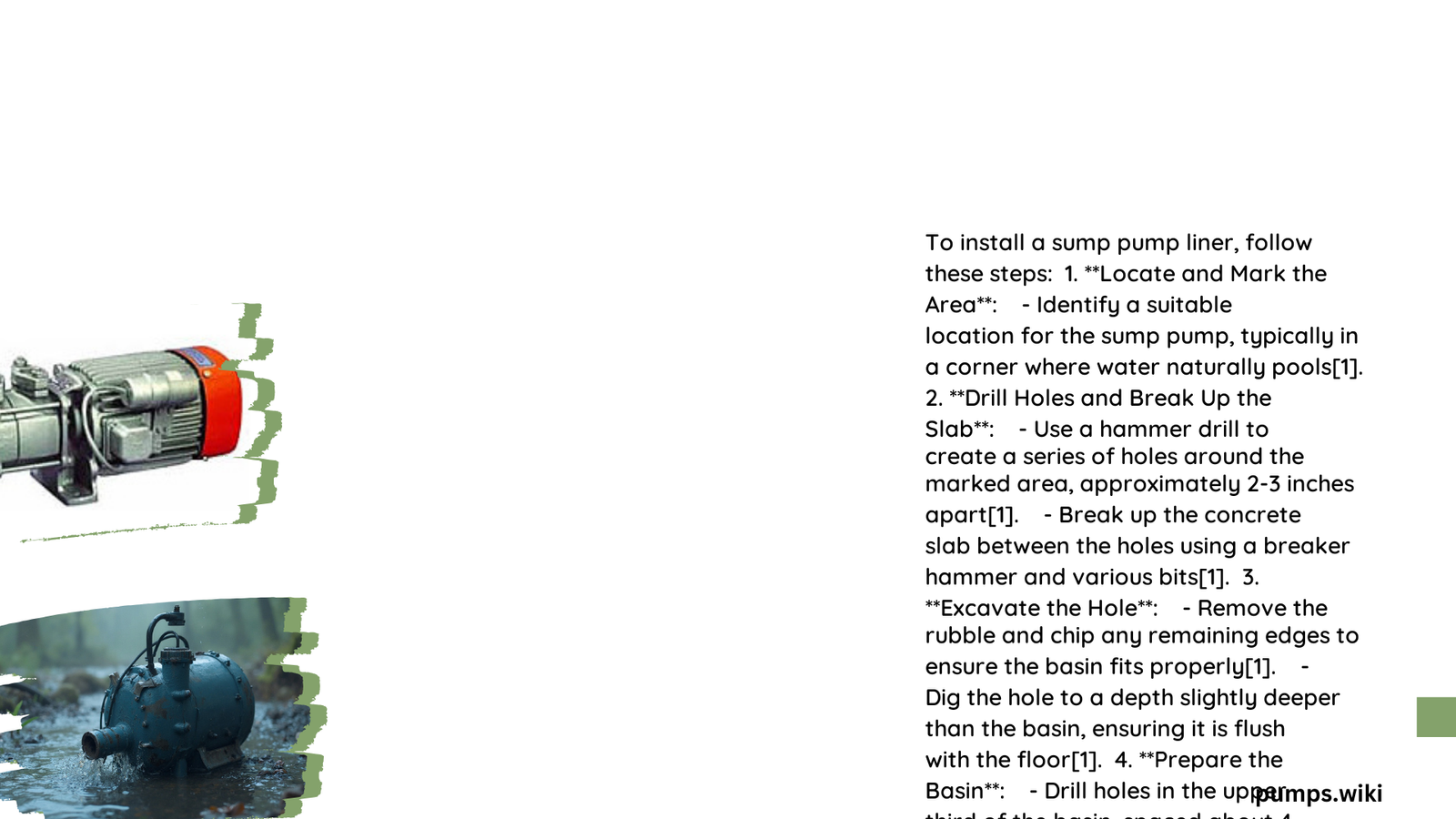Installing a sump pump liner is a critical home maintenance task that prevents basement flooding and water damage. This comprehensive guide will walk you through the precise steps of selecting, preparing, and installing a sump pump liner, ensuring your basement remains dry and protected from potential water intrusion. Whether you’re a DIY enthusiast or a homeowner seeking professional insights, our expert-crafted instructions will help you successfully complete this essential home improvement project.
What Tools and Materials Do You Need?
Essential Tools
- Jackhammer or concrete saw
- Laser level
- Shovel
- Gravel
- PVC pipes and cement
- Check valve
- Rubber grommets
- Safety glasses
- Work gloves
Required Materials
| Material | Specification | Recommended Quantity |
|---|---|---|
| Sump Pump Liner | Polyethylene/Fiberglass | 1 unit |
| Clean Gravel | 3/4 inch diameter | 2-3 cubic feet |
| PVC Pipe | 1.5-2 inch diameter | 10-15 feet |
| Check Valve | Compatible with pump size | 1 unit |
How to Prepare the Sump Pit?

Locate the Optimal Position
- Use a laser level to identify the lowest point in your basement
- Mark the precise location for sump pump installation
- Ensure the spot allows proper drainage and pump functionality
Excavation Process
- Break through concrete floor using a jackhammer
- Dig a hole slightly larger than the sump basin
- Maintain consistent depth (24-36 inches recommended)
- Remove all debris and ensure a clean, level surface
What Are the Installation Steps?
Liner Placement Technique
- Carefully lower the sump pump liner into the excavated pit
- Ensure liner sits level and stable
- Leave approximately 2 inches of space around the liner’s perimeter
Drainage System Connection
- Install perimeter French drain if required
- Use clean stone for proper drainage
- Create weep holes to prevent air locking
Discharge Pipe Installation
- Attach discharge pipe using male-threaded adapter
- Apply PVC cement for secure connection
- Install check valve to prevent water backflow
- Ensure pipe reaches outside of house
How to Secure and Finish the Installation?
Backfilling Process
- Use clean gravel around liner
- Fill in spaces systematically
- Compact gravel gently to prevent settling
Final Touches
- Install airtight sump pump lid
- Use rubber grommets around pipes and wires
- Restore basement floor surface
- Test pump functionality
Pro Tips for Successful Installation
Common Mistakes to Avoid
- Don’t install liner too deep
- Ensure proper sizing
- Check local building codes
- Maintain consistent gravel bedding
Maintenance Recommendations
- Inspect liner annually
- Clean pit periodically
- Test pump functionality every six months
- Replace liner if signs of wear appear
Troubleshooting Potential Issues
Potential Challenges
- Uneven floor surfaces
- High water table
- Soil instability
- Drainage complications
Quick Solutions
- Use leveling compounds
- Install additional drainage systems
- Consult professional waterproofing experts
Cost Considerations
Estimated Expenses
- Sump Pump Liner: $50 – $300
- Tools: $100 – $500
- Professional Installation: $500 – $2,000
Safety Precautions
Personal Protection
- Wear safety glasses
- Use work gloves
- Ensure proper ventilation
- Have first aid kit nearby
Electrical Safety
- Disconnect power before installation
- Use ground fault circuit interrupter (GFCI)
- Follow manufacturer’s electrical guidelines
Conclusion
Successful sump pump liner installation requires careful planning, precise execution, and attention to detail. By following these comprehensive steps, homeowners can effectively protect their basements from water damage and ensure long-term structural integrity.
